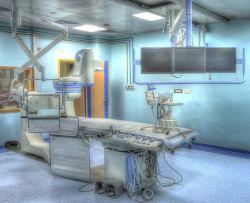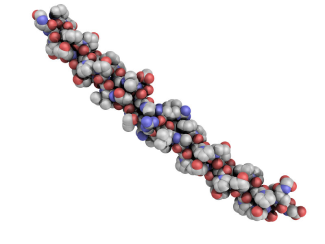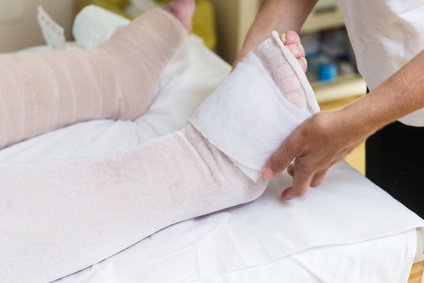Hospital-Acquired Pressure Ulcers: The Risks
December 26, 2014
Litigation over hospital-acquired pressure ulcers represents a significant fraction of a medical malpractice attorney's caseload. The liability issues have shifted since October 1, 2008 when the Centers for Medicare and Medicaid Services and several private payers began denying reimbursement for care related to hospital-acquired stage III and IV pressure ulcer. Prior to October 2008, the experts battled over whether a pressure ulcer was avoidable. Now, they still do, but plaintiff attorneys and their experts can point to the government's stance that pressure ulcers are avoidable, "never events". Defense experts must assert that everything possible was done to avoid the ulcer, or it was not really caused by pressure.
The National Pressure Ulcer Advisory Panel's (NPUAP) 2014 conference focusing on the unavoidability of pressure ulcers within an organ system framework found that virtually all organization stakeholders and audience participants agreed that "unavoidable pressure ulcers do occur."1 The complexity of pressure ulcer development given the intrinsic and extrinsic factors leading to development in cases of unavoidable injury adds to the overall importance of assessment for risk factors, employment of prevention strategies, education of staff and family involved in patient care, and proper wound documentation.
Implications of Pressure Ulcers
Studies have revealed that pressure ulcers produce endless pain, restrict life activities and require a significant amount of coping on the part of the patient. The persistent pain is caused by the increase in pain that occurs as a result of moving (leading patients to lay still), the pain associated with dressing changes and debridements, and the pain caused by alternating air mattresses. Pressure ulcers cause depression, anxiety, feelings of being burdensome, powerless, and inadequate. Wound odor affects the patient and others.
Pressure ulcers can cause significant emotional distress in patients. Pressure ulcers are associated with long lasting pain and suffering. The healing process can take months and involve elaborate surgical procedures such as flap creation, and impose a severe financial and social burden on families. The annual cost to treat pressure ulcers is 1.68 to 6.8 billion dollars. The cost of treating ulcers is well over twice the cost of preventing them. This does not even include the cost of litigation.
Development of Stage II and IV Pressure Ulcers Raises Issues of Liability
These are the questions legal consultants evaluating pressure ulcer cases are often asked to evaluate.
- Did the nursing staff recognize the risk factors associated with the development of pressure ulcers? They include poor nutrition, limited mobility, incontinence, dehydration, and other illnesses.
- Did the staff use a standardized risk assessment according to the policy of the facility? Acute care patients in ICU should be reassessed daily with unstable patients being reassessed every shift. Medical surgical and other patients should be assessed at least every 48 hours. Many facilities do this more often because patient status can change rapidly. The Institute for Healthcare Improvement recommends daily assessment. There should be clear expectations of staff conducting the risk assessment, which include which nurse is responsible for the first assessment and for subsequent assessments. This should be defined as to who and which shift is responsible for doing the assessment. There should be a permanent method of denoting a patient at risk for pressure ulcer development and the means of communicating that risk status to all who care for the patient.
- Did the nursing staff perform a standardized skin assessment?
- Did they assess skin color, temperature, sensation, moisture, integrity, and turgor?
- Was skin breakdown present on admission to the hospital? This can be a hotly contested battleground if there are discrepancies in the description of the skin of a patient who is sent to a hospital from a nursing home. "Present at the time" means the order for inpatient admission has occurred, which is often a decision made in the emergency department. Patients must be assessed within a narrow window of time after admission with no provision for weekends or holidays.
- If the patient's skin was intact at the time of admission to the hospital, but was at risk for skin breakdown, did the nursing staff institute a plan of care to prevent skin breakdown?
- Did the staff address nutritional deficits, relieve pressure, and control incontinence?
- Did they use appropriate lifting techniques to avoid shearing skin when lifting the patient up in bed?
- Did they use outdated methods of prevention, such as sheepskins, donuts or massaging bony prominences? The failure to prevent skin breakdown is usually the central component of liability.
- When the patient's skin began to break down, did the nursing staff promptly recognize the change, communicate it to the physician, protect the skin from further damage, and address the factors that caused the skin breakdown to occur?
- Was the plan of care changed?
- Did the staff collect applicable information about the ulcer, such as dimensions, pressure ulcer stage, and presence of tunneling, undermining, drainage, wound edges, and odor?
- Was the charting consistent, legible, and complete? Although there may be inconsistency in how wound care staff stage a pressure ulcer, there should not be wide variation. Education should be provided to keep wound care staff current with the NPUAP pressure ulcer staging system, definitions and position statements.
- Did the interdisciplinary staff select the correct treatment for the stage of the ulcer?
- Did they consult with a reputable source of information about products?
- Did the staff update the medical record to reflect the new plan, chart the interventions, perform periodic reassessments of the skin, and look for healing? Studies have shown that if a wound with the ability to heal is not 30% smaller at week four, despite optimal local wound care, it is unlikely to heal by week 12. Advanced therapies should be considered. If a wound is unlikely to heal because of inadequate vasculature or a coexisting illness, advanced therapies are seldom indicated and their chance of success is minimal.
Citation:
1. Edsberg LE, Langemo D, Baharestani MM, Posthauer ME, Goldberg M. Unavoidable pressure injury: state of the science and consensus outcomes. J Wound Ostomy Continence Nurs. 2014;41(4):313-34. Other Resources: http://www.npuap.org http://psnet.ahrq.gov/primer.aspx?primerID=3 http://www.woundsource.com/blog/do-you-know-these-10-risk-factors-press…
Editor's Note: This blog has been adapted from the article, "Hospital Acquired Pressure Ulcers: The Risks," by Patricia Iyer, MSN RN LNCC (Med League), published to WoundSource.com on November 10, 2010. This article has been updated by Kestrel Health Information staff editors.
The views and opinions expressed in this blog are solely those of the author, and do not represent the views of WoundSource, HMP Global, its affiliates, or subsidiary companies.












Follow WoundSource
Tweets by WoundSource